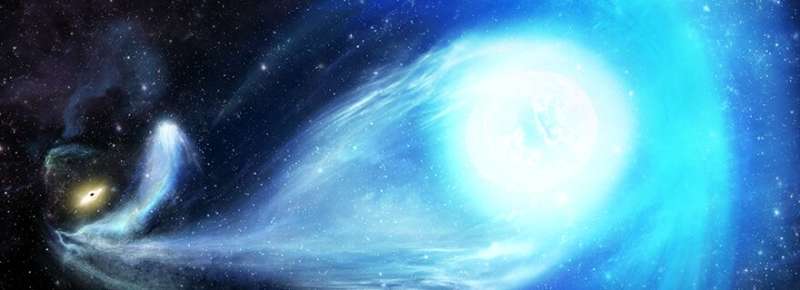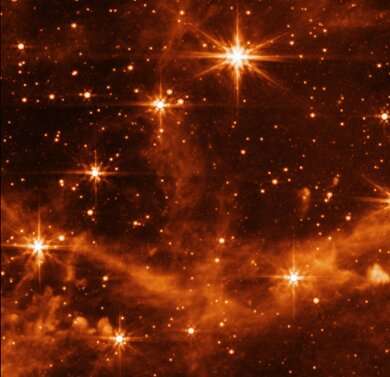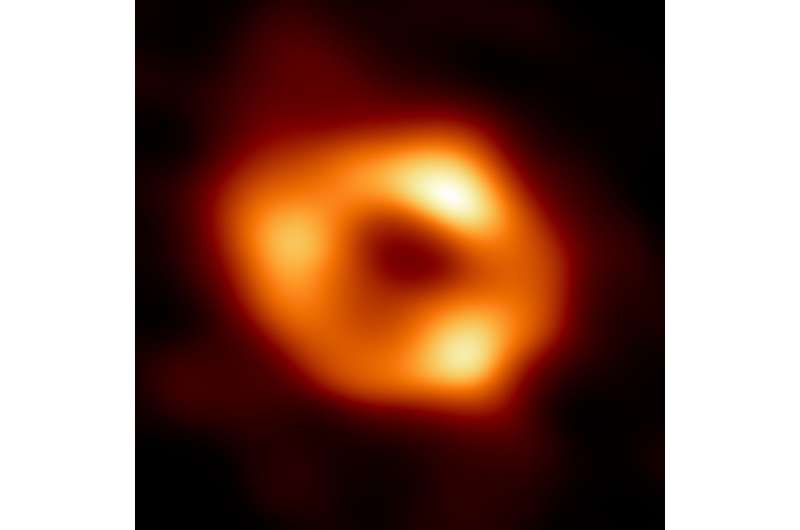
Artist’s impression of a hypervelocity star. Credit: ESA
The fastest stars in the Milky Way hurtle along at over a thousand kilometers per second. Ph.D. candidate Fraser Evans has conducted research into these elusive hypervelocity stars and discovered that they have a lot to teach us about black holes and supernovae, for example.
Hypervelocity stars (HVS) are stars that move so fast they can escape the gravity of the Milky Way. In 2019, astronomers discovered a star—the S5-HVS1—which covers an astounding 1,755 kilometers per second. Dozens of these stars have since been found. But there are probably about a thousand of them within our galaxy.
Credit: Leiden UniversityMillions of fake stars
Evans used computer simulations to eject millions of fake hypervelocity stars through the Milky Way. He wanted to get a better understanding of where they and their speed come from.
“To make the right computer simulations, we used a lot of data from the Gaia space telescope, which has mapped an impressive two billion stars in our Milky Way,” says Evans. His research results will make it easier to find hypervelocity stars in the future.

Image of the Large Magellanic Cloud taken by the James Webb Space Telescope. Credit: NASABlack holes and supernovae
But why is it so important for astronomers to find out more about these speed demons? “We can assume with fairly great certainty that some of the hypervelocity stars that have now been discovered were ejected following a gravitational encounter with the massive black hole in the center of the Milky Way: Sagittarius A*. We see a similar effect in the Large Magellanic Cloud, another galaxy that we have reason to believe also contains a black hole.” In the right conditions supernovae—exploding stars—could also eject hypervelocity stars.
“The stars that turn into supernovae are incredibly rare in our Milky Way and the event is so short-lived that it is difficult to measure. Added to that, there are so many stars and so much dust flying around Sagittarius A* that we can’t properly see what is going on there,” Evans explains. “Some hypervelocity stars are flying in more visible parts of space and can tell us more about where they come from. For example, about the gravity of black holes or the amount of energy a supernova produces.”

Picture of Sagittarius A*, the black hole in the middle of our Milky Way. Credit: Event Horizon Telescope
Although Evans had no particular ambition to become an astronomer as a child, his studies and research have left him fascinated by hypervelocity stars.
“They’re such cool objects. A thousand kilometers per second is extremely fast. You could fly around the world in under a minute. They also have a story to tell about processes in the universe about which we know little and still have much to discover.”
Provided by Leiden University








